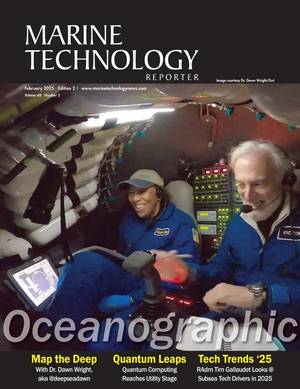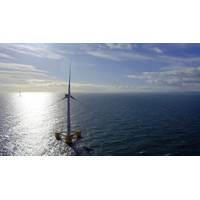
Offshore Renewable Energy: A Port Puzzle for Floating Offshore Wind
costly heavy lift and installation vessels and even the pressure to ship out towers and blades in multiples for offshore installation. But it does create a new need; for big investment in onshore cranage, says Colin McKinnon, Technical Director, at engineering group Wood. For the 8MW Hywind Tampen, a Mammoet crane had to be hired in to the Wergeland Group assembly yard, north of Bergen, where assembly operations will be carried out. Not too far into the future, cranes able to lift the 15MW and then 20MW turbines and blades into place will be required.Many are gearing up for a slice of the action. In
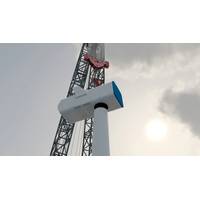
Mammoet, Offshore Wind Innovators Open Challenge to Innovate on Offshore Wind Logistics
Companies challenges innovators to find a solution for lifing, transferring components for offshore wind turbinesMammoet and Offshore Wind Innovators, in cooperation with TKI Wind op Zee, have launched the 5th Offshore Wind Innovation Challenge, which is focused on finding solutions for the safe and efficient transfer of objects from a floating vessel to offshore wind structures, to reduce the cost and the scheduled impact of maintenance. The challenge can be split into three different sub-sections:How do you position the barge, ship, or vessel close to the wind turbine foundation, floater
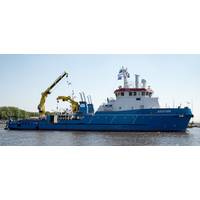
DUC Marine, KOOLE Mammoet Salvage Join Forces
DUC Marine Group and KOOLE Mammoet Salvage have reached an agreement for future salvage and wreck removal operations. DUC will be responsible for all diving activities relating to salvage operations and diving equipment maintenance. Henk Kapitein, CEO of DUC Marine Group, said, “This acquisition is an important step in realizing our ambition to become a medium-sized global operator in the marine industry. KOOLE’s state-of-the-art salvage equipment is active around the globe, which enables us to expand our activities worldwide. Together with our new-built DP-2 MPSV Solution, which was
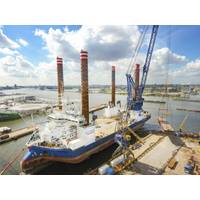
Sea Installer Receives Crane Upgrade
of the upgraded crane is such that it can be operated in two modes: a long mode with the crane boom extension in place, and a short mode with the extension removed. The Sea Installer now has a flexible crane capacity of 900 metric tons in short mode and 700 metric tons in long. Two mobile Mammoet cranes lifted the extended crane boom back onto the vessel. To create a stable lifting foundation – allowing for a maximum of 0.3 degrees of tilt – the quayside was leveled prior to the vessel’s arrival at the yard. This required laying no less than 800 cubic meters of sand, topped

Tidal Power Turbines Installed in Dutch Eastern Scheldt
Mammoet, a provider of engineered heavy lifting and transport, announced it has completed the installation of a Tidal Power Plant (TPP) in the Netherlands. Working with Tocardo Tidal Turbines, producer of tidal and free-flow water turbines, Mammoet carried out the transportation and installation work for this renewable energy project at the Easter Scheldt storm surge barrier (Oosterscheldekering). The project, known as OTP2, comprised five tidal turbines in a steel structure with a total weight of 500 tons. The project raised a number of installation challenges for the teams involved, Mammoet

Huge Heavy Lift Project Wraps up in Colombia
Mammoet concludes multi-year heavy lifting and transport project for refinery in Cartagena, Colombia Mammoet USA informs it has completed a heavy lifting and transport project at the largest refinery in Colombia, the Reficar Refinery. Mammoet was contracted to assist in the modernization and expansion of the refinery in 2011. The scope of lifting and transport services for this project was large and diverse with more than 1,000 lifts and moves with 150 of the lifts weighing 100 tons or more. Mammoet served as a key contractor, handling all overland transport, inland shipping and
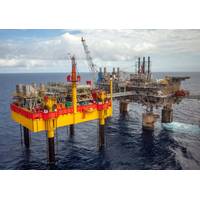
Offshore Oil: Mammoet Installs Platform for Shell
Mammoet installed the Malampaya Phase 3 Depletion Compression Platform in the West Philippine Sea for Shell Philippines Exploration b.v. The Malampaya Depletion Compression Platform (DCP) is a new type of ‘self-installing platform;’ the platform floats into place over its end-location after which the legs are lowered onto the prepared seabed. It uses a pre-installed jacking system to enable the 80m legs to be jacked down and lift the platform from the water to its final position. This technology avoids the need for the large specialized vessels that are normally required for an offshore

New Chains Replace Steel for Lashing Cargo
and management. Operatives can communicate much more easily, for example, which helps them work more safely and efficiently. Several sets of field trials have already been completed for different markets, and two partners have been acting as pioneers within each of those markets. Mammoet Europe B.V., in Schiedam, The Netherlands, evaluated the chains on their mega trucks and trailers while Nor Lines A/S, a shipping company in Stavanger, Norway, has been testing TYCAN chains for tying down loads on ships. Marcel Schets, manager of safety, health, environment and quality
Rowan Viking Rig Upgrade Completed on Schedule
new approach to this kind of project. Firstly a project execution plan was drawn up that allowed the three aspects of the contract to be undertaken simultaneously. To enable this to happen, changes had to be made both to working practises and to the organisation of the yard itself. The use of a Mammoet crane and Palfinger’s unique JUMP system were also critical elements. The PTC crane was delivered on over 100 trucks and was erected to a height of 200 metres on special permanent foundations installed to bear the immense loads. This allowed the rig to remain at sea level and the leg extension
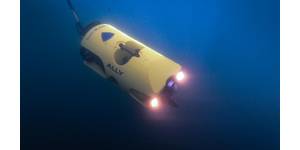
 February 2025
February 2025
